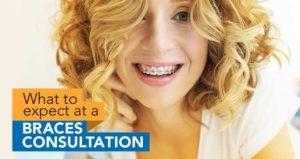The Basic Principles Of Legacy Orthodontics
The Basic Principles Of Legacy Orthodontics
Blog Article
Rumored Buzz on Legacy Orthodontics
Table of ContentsThe 2-Minute Rule for Legacy Orthodontics7 Simple Techniques For Legacy OrthodonticsAn Unbiased View of Legacy OrthodonticsThe Buzz on Legacy OrthodonticsSome Known Facts About Legacy Orthodontics.
At Advanced Orthodontics, we give individuals with a holistic therapy experience. Additionally, we provide adjustable therapy timetables, adaptable settlement options and an enjoyable, enjoyable experience. braces. Call ( 480) 357-4900 today for additional information and schedule a visit.An orthodontist is a dental practitioner trained to diagnose, avoid, and treat teeth and jaw irregularities. Orthodontists work with individuals of all ages, from children to grownups.
Malocclusion, or misaligned teeth, can result in dental concerns, consisting of tooth decay, periodontal disease, and hard or agonizing eating. But not every person is born with straight teeth. If you have a poor bite or large spaces between your teeth, you may want to seek advice from a dental professional concentrating on orthodontic treatment.
The Ultimate Guide To Legacy Orthodontics
( Picture Credit: DigitalVision/Getty Images) Orthodontists make use of taken care of and detachable dental gadgets, like dental braces, retainers, and bands, to change the setting of teeth in your mouth. Orthodontic treatment is for oral irregularities, including: Misaligned teethBite problems, like an overbite or an underbiteCrowded teeth or teeth that are also much apartJaw misalignmentThe objective of orthodontic treatment is to improve your bite.
While you might think of orthodontists as generally for kids or teens who require dental braces, they can fix oral issues at any kind of age. Orthodontists go to college, dental school, and orthodontic school.
All orthodontists are dental professionals, but not all dental experts are orthodontists. Orthodontic residency programs use intensive, concentrated instruction for dental professionals. They concentrate on 2 areas: How to appropriately and securely relocate teeth Exactly how to appropriately lead development in the teeth, jaw, and faceOnce an orthodontist has actually finished training, they have the alternative to come to be board licensed.
The smart Trick of Legacy Orthodontics That Nobody is Talking About
Imbalance, or malocclusion, is one of the most usual factor individuals see an orthodontist. It is hereditary and is the outcome of dimension distinctions in between the top and reduced jaw or between the jaw and teeth. Malocclusion results in tooth overcrowding, an irregular jaw, or uneven bite patterns. Malocclusion is usually treated with: Your orthodontist connects steel, ceramic, or plastic square bonds to your teeth.
Some people need a headgear to help relocate teeth into line with pressure from outside the mouth. A retainer is a custom-made tool that keeps your teeth in location.
They're most typically used on children. They can develop additional room in the mouth without needing to pull teeth. If you have a significant underbite or overbite, you might require orthognathic surgery (additionally called orthodontic surgical treatment) to lengthen or reduce your jaw. Orthodontists utilize cables, surgical screws, or plates to sustain your jaw bone.
You may need to see an orthodontist if you have: Crowding or not sufficient space for every one of your teethOverbite, when your top teeth come by your base teethUnderbite, when your bottom teeth are as well far forwardSpacing or concerns with gapsCrossbite, which is when your top teeth fit behind your base teeth when your mouth is closedOpen bite or an upright gap in between your front bottom and top teethMisplaced midline, when the facility of your base and top teeth don't align Dealing with a dental malocclusion can: Make attacking, chewing, and talking easierImprove the balance of our face and your total appearanceEase pain from temporomandibular joint disordersDifferent your teeth and make them much easier to cleanse, assisting stop dental caries or tooth cavities It's commonly a dentist that first notifications misaligned teeth during a regular exam.
Legacy Orthodontics Fundamentals Explained

Throughout your first orthodontic examination, you'll likely have: An oral examPhotos taken of your face and smileDental X-raysPanoramic (360 level) X-rays of your face and headImpressions to create molds of official statement your teethThese tests will assist your orthodontist recognize just how to proceed with your treatment. leesburg orthodontist. An orthodontist is a dentist that's had training to treat your teeth and jaw
Orthodontists may carry out surgery, exams,X-rays,and even more to help you obtain an extra comfortable, much healthier smile. An orthodontist is concentrated on your bite, so something like a broken tooth would certainly be dealt with by a dental practitioner. Orthodontists are dentists yet not all dentists are orthodontists. Orthodontists are concentrated on your bite, or the method your teeth meshed, and the straightness of your teeth.
Ever before asked yourself exactly how celebrities always seem to have completely straightened teeth? Orthodontists are dental experts that focus on remedying irregularities in the teeth and jaws.
The 10-Minute Rule for Legacy Orthodontics

While dental braces are one of the most commonly acknowledged orthodontic treatment, orthodontists have a diverse toolkit at their disposal. The certain technique selected relies on the severity of the instance, the person's age, and private preferences. These tried-and-true braces use a system of brackets bonded to the teeth and connected by wires.
Clear aligners, like Invisalign, are a popular choice for people seeking a more discreet treatment alternative. These removable trays are custom-made to considerably shift the teeth's position. Headwear might be used together with braces or aligners to apply additional targeted forces, especially for correcting jaw disparities. In situations of narrow jaws, palatal expanders can be utilized to create room for correct tooth positioning.
Report this page